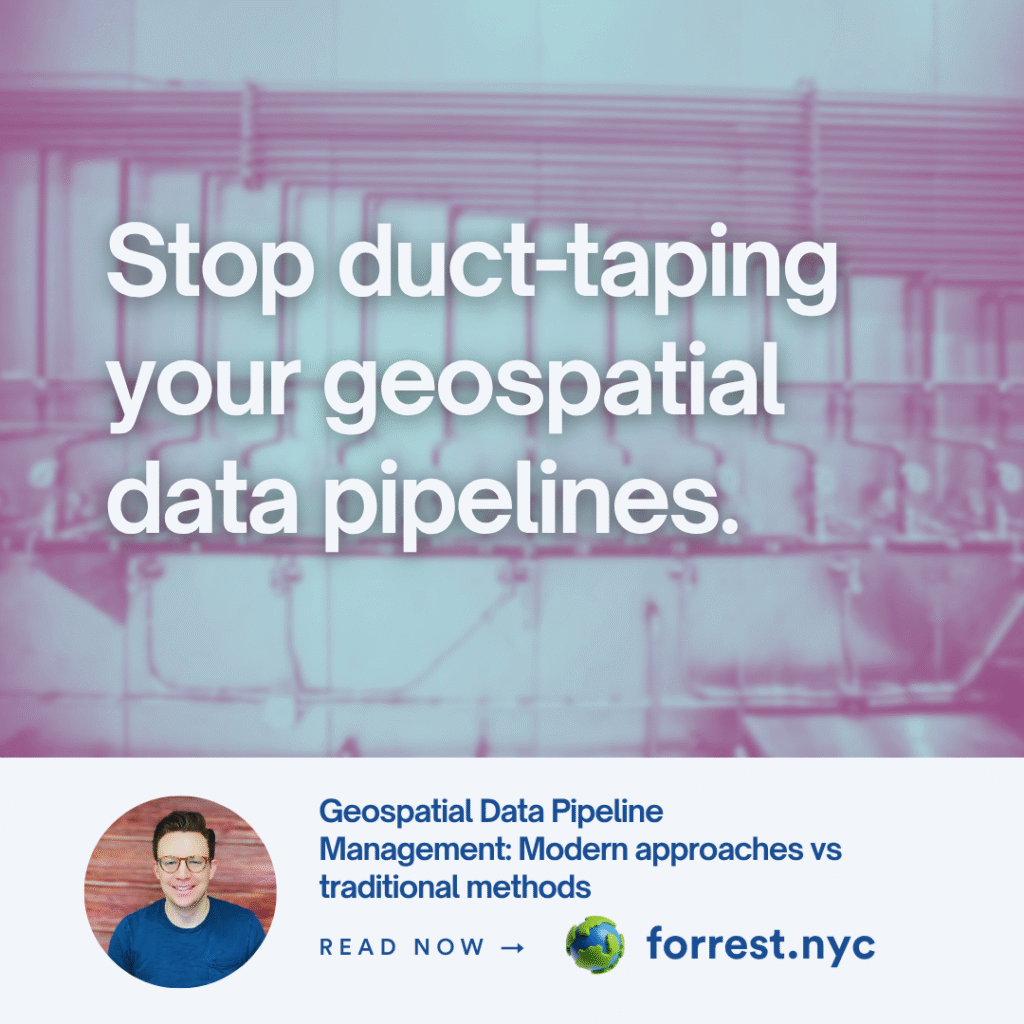Having the right formats is one thing. Getting your data into those formats reliably, at scale, and on schedule is another thing entirely. You can read all you want about GeoParquet and Zarr and COG, but if you can’t create a repeatable process to convert your legacy shapefiles to GeoParquet or your NetCDF files to […]
Esri vs Open Source GIS: The Real Debate Behind the Tools
It started the way most online debates do: with a LinkedIn post and a strong opinion. I’d shared a graphic about modern GIS tools, highlighting open-source workflows and cloud-based options I believe help push the industry forward. Kyle Satterfield, GISP, had a different take. He took my graphic, dropped it into ChatGPT, and asked it […]
Cloud Native Geospatial Formats: GeoParquet, Zarr, COG, and PMTiles Explained
Storage is the foundation, but formats are what make cloud-native geospatial actually work. You can put any file in cloud storage. A shapefile, a GeoTIFF, a KML file, whatever. But just because it’s in the cloud doesn’t mean it’s cloud-native. And there’s a big difference between the two. Cloud-native formats are designed from the ground […]
Airflow + AI + Iceberg V3: The New Stack for Scalable Geospatial Data
TOP OF THE STACK Recently I have talked about Airflow, and I have talked about Agentic AI, but not the two together. Well with the release of the Airflow AI SDK from Astronomer you can now do both, together. Check out this video from The Data Guy (aka George Yates) about this functionality. Take a look and let me know […]
Breaking the GIS Silo: Why GeoParquet and Iceberg are the key to Spatial Analytics at Scale
For decades, GIS has lived in a world of its own. Specialized software. Obscure formats. A profession that, despite being critical to everything from climate modeling to logistics, has remained siloed from the rest of the data world. But that’s finally starting to change. In the latest episode of the Spatial Stack podcast, I sat […]





